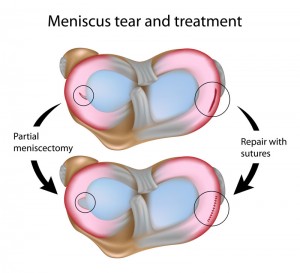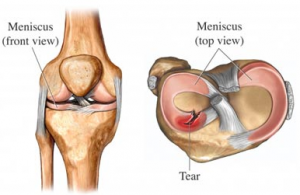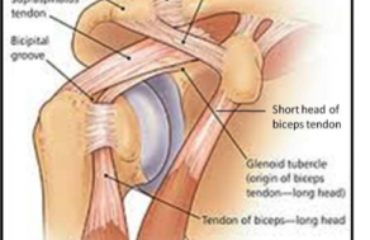When deciding how to treat a torn meniscus, there are numerous things to consider, such as your activity level, age, the location and extent of the tear, the doctor’s preference, and when the injury occurred. Treatment options include conservative measures, such as rest, ice therapy, compression and elevation, physical therapy, and a temporary knee brace. Also, there is surgical repair (sew the pieces together), partial meniscectomy (removal of the torn section), and total meniscectomy (removal of the entire meniscus).
Arthroscopic Meniscus Repair
When possible, the orthopedic specialist will do meniscus surgery by using an arthroscope. This is used to treat tears at the outer edge of the meniscus, which tends to heal well due to adequate blood supply. Repair of this section is usually successful. The inner two-thirds of the meniscus does not have as good of blood supply, so the torn pieces may float in the joint, resulting in a “locked” knee. For these tears, a partial meniscectomy is done to remove the torn portion and shave the remaining edges to smooth the meniscus.
If the meniscus can be repaired, the orthopedic surgeon will try to save the injured meniscus to reduce the occurrence of joint degeneration of the knee. Meniscus repair is often more successful in younger patients (40 years old or less), for knees with adequate ligament stability, when the tear is in the outer edge, and when the repair is done during the first few weeks following the trauma or injury. Also, meniscus repair can prevent knee joint degeneration, and many specialists believe that a successful procedure lowers the patient’s risk of early-onset osteoarthritis.
Types of Meniscus Tears
- Longitudinal tears – These are easily repairable.
- Radial tears – May not be repairable, depending on location.
- Horizontal tears – Not usually repairable.
- Oblique (flap) tears – Not usually repairable.
Symptoms
When a meniscus tear occurs, the patient often reports feeling a “pop.” Most individuals can still walk on the knee, but some athletes report pain, stiffness, and swelling. Over the next couple of days, the knee will gradually get worse. Common symptoms of a meniscal tear include:
- Pain
- Stiffness
- Swelling
- Locking of the knee
- Giving way of the knee
- Loss of full range of motion
Meniscal Tear Treatment
 How the Scottsdale orthopedic specialist treats the meniscus tear will depend on the type of tear the patient has, the location, and the size of the tear. The outer one-third is called the red zone, and it heals best due to rich blood supply, as with a longitudinal tear. In contrast, the inner two-thirds of the meniscus does not have good blood supply and is considered the white zone. Complex tears result from worn, thin cartilage. The pieces cannot usually be grown back together, so tears of this region are surgically trimmed. Factors considered with these tears include age, activity level, and other related injuries.
How the Scottsdale orthopedic specialist treats the meniscus tear will depend on the type of tear the patient has, the location, and the size of the tear. The outer one-third is called the red zone, and it heals best due to rich blood supply, as with a longitudinal tear. In contrast, the inner two-thirds of the meniscus does not have good blood supply and is considered the white zone. Complex tears result from worn, thin cartilage. The pieces cannot usually be grown back together, so tears of this region are surgically trimmed. Factors considered with these tears include age, activity level, and other related injuries.
Rehabilitation and Recovery
After the meniscal repair procedure or surgery, the orthopedic surgeon will put the knee in a brace or cast to immobilize it. With repair, the patient uses crutches for a month and cannot put weight on the knee. After initial healing, the doctor has the patient begin rehabilitation exercises. This will restore strength and mobility to the knee. Exercises can be carried out at home, but physical therapy is often used. The total rehabilitation time is about three months. A meniscectomy requires only three to four weeks to heal completely.



